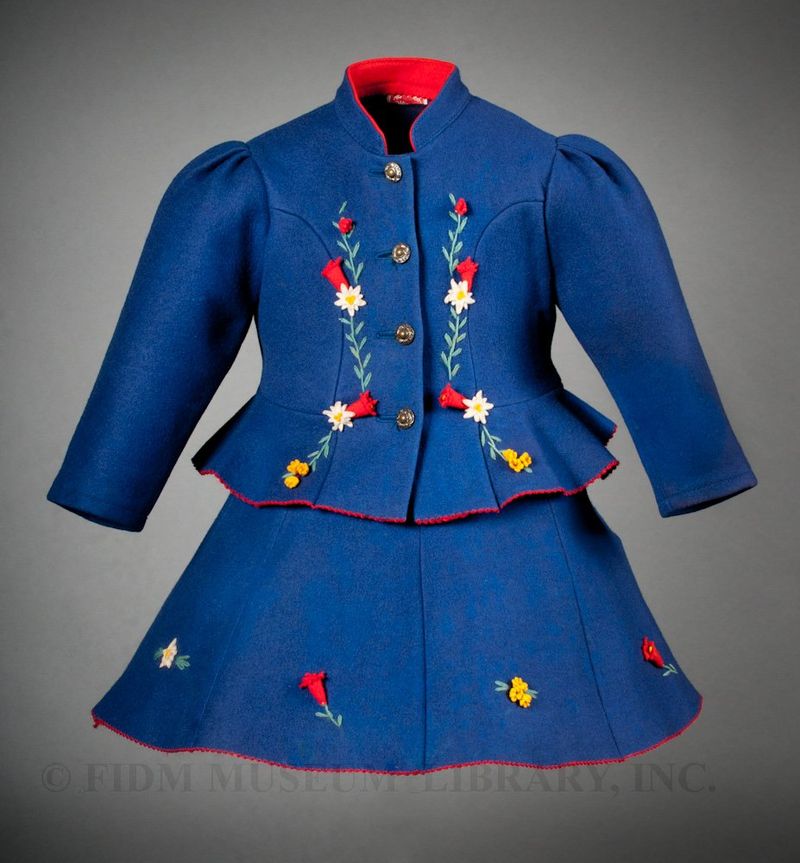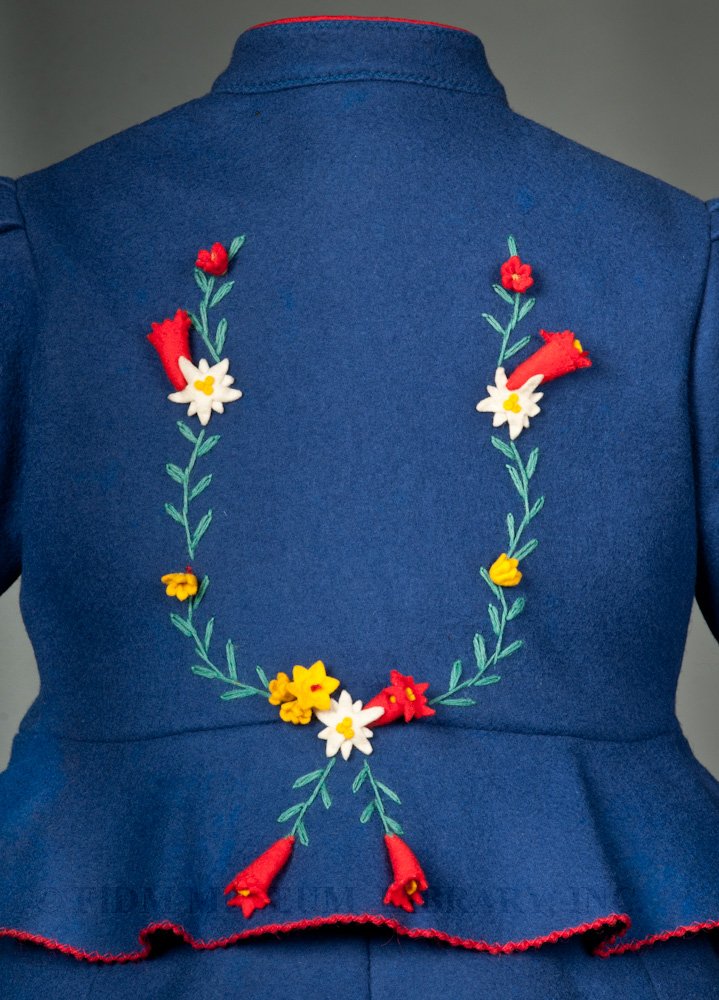Wiener Werkstatte girl's ensemble
 Wiener Werkstatte
Wiener Werkstatte
c. 1930
2005.5.170AB
Museum Purchase
Founded in 1903 by architect Josef Hoffman and artist Kolomon Moser, the Wiener Werkstatte (Vienna Workshop) was a group of artists, designers and craftsman dedicated to combining artistry and function in the design and manufacture of everyday objects. Like the 19th century reformers William Morris and Charles Ashbee, the founders of the Wiener Werkstatte believed that mass-production had diminished, if not entirely eliminated, the aesthetic appeal of everyday objects. The overarching goal of the Wiener Werkstatte was to create a gesamtkunstwerk, a total work of art that united architecture, furniture, graphic design, clothing and all other material elements of daily life into a unified and harmonious whole. To this end, Wiener Werkstatte designers reimagined everything from architecture, to furniture, even place settings for the dinner table. By 1928, the Wiener Werkstatte and affiliated designers were producing ceramics, metalwork, bound books, textile patterns, jewelry, lace and other objects. Wiener Werkstatte designs were realized by skilled craftspeople who worked under relatively progressive conditions.
The Wiener Werkstatte consisted of multiple departments: a design school, studios for established designers, production workshops and retail outlets. Because so many designers were involved with the Wiener Werkstatte, it is difficult to pinpoint a collective aesthetic. In general, Wiener Werkstatte designers shunned extraneous decoration, relying instead on the integrity of materials and craftsmanship to speak for itself. Each designer had his or her own style, and these styles evolved over the life of the Wiener Werkstatte. This selection of postcards highlights the varied styles of artists associated with the Wiener Werkstatte. Co-founder Josef Hoffman relied on geometric forms in his work; his bentwood chair incorporates a variety of simple geometric forms. Dagobert Peche, another leading Wiener Werkstatte designer, created twining, intricate designs based on stylized flowers and foliage.
A fashion division was founded in 1911. One of the most successful and long-lasting branches of the Wiener Werkstatte, the fashion department produced garments, shoes, handbags, umbrellas and other accessories. Extant examples of garments indicate that they were often made from the vibrant silk textiles created by the Wiener Werkstatte textile designers. For that reason, this blue wool felt children's ensemble is a bit of a puzzle. Comprised of a princess seamed jacket and matching skirt, both decorated with dimensional felt flowers, this ensemble has a Wiener Werkstatte label inside the jacket. The styling is different from all the Wiener Werkstatte garments that we've encountered. How does it fit into the artistic output of the Wiener Werkstatte?
With its folklore flavor, this ensemble suggests our 1940s Lanz jacket, which was also made in Austria. We've dated this girl's ensemble to c. 1930, which coincides with the last years of the Wiener Werkstatte. According to Wiener Werkstatte scholars, by the late 1920s and early 1930s, the Wiener Werkstatte aesthetic was largely informed by folk traditions rather than the contemporary artistic movements that had influenced the workshop in its early years. The Wiener Werkstatte was also financially unstable, which might have resulted in attempts to create more commercially viable products. Is this girl's ensemble an example of the Wiener Werkstatte attempting to reinvigorate its finances with accessible design?
By 1930, numerous factors had affected the financial stability of the Wiener Werkstatte. The privations of the World War I years (1914-1918) and the dissolution of the Austro-Hungarian empire at the end of World War I resulted in a shrinking pool of wealthy customers and patrons. The economic crash of 1929 and the subsequent worldwide depression coupled with the rise of the Nazi party were the final blows to the Wiener Werkstatte. In 1932, the textile and fashion workshops were the last remaining departments; these remnants of the Wiener Werkstatte were liquidated in the fall of 1932.
Is this girl's ensemble one of the final products of the Wiener Werkstatte? Have you seen any similar garments with a Wiener Werkstatte label? If you have any information or insight on this girl's ensemble, please let us know. Your input could help us crack this case!
